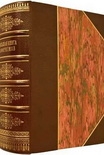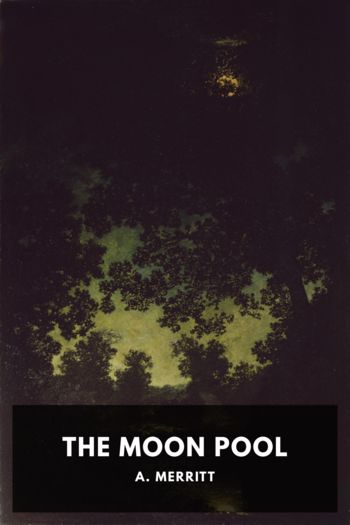How to Become a Witch, Amber K. [new books to read .txt] 📗

- Author: Amber K.
Book online «How to Become a Witch, Amber K. [new books to read .txt] 📗». Author Amber K.
The Celtic Tree Oracle: A System of Divination by Liz and Colin Murray
AORA Gemstone Oracle Cards: Cards to Explore the Crystal Realms by James McKeon and Roberta Carothers
The zodiac
If you have a special connection with a specific culture or with animals, trees, stones, or some other aspect of nature, you can find a deck to suit you. Look for them at your nearest metaphysical store or find them online.
Runestones or Runes: These are the (usually twenty-four) letters of Old Norse and Germanic alphabets inscribed on stones or small pieces of wood—a bit like Scrabble tiles but more elegant. You could make your own set out of clay or wood, or purchase sets that are carved on gemstones, polished bone, wood, glass, or ceramic.
Several forms of the runes exist, but the best known is the Elder Futhark. Each letter has a name and meaning apart from its functional use as a letter. Raidho, for example, looks like a stylized capital R and means travel, journey, movement, or change of perspective.
If you draw a rune as part of your regular practice each morning, it can tell you what energy lies ahead for the day. With thought and interpretation, you can use the runes to answer any question.
Casting the Stones: Several methods of divination involve tossing stones onto a cloth or the earth and looking for the relationships among them. Generally, each stone has a particular meaning (news, love, luck, home) or energy related to astrology (sun, moon, Venus, etc.).
Because sets are composed of several stones—thirteen is a favorite number—and they can land in an infinite number of patterns, interpreting the message is challenging. However, it is possible to use them in a simpler way by choosing one stone to represent yourself and two others to symbolize yes and no. Toss the three, and the one closer to the primary stone gives you the answer.
Doreen Valiente, a British Witch and elder who worked with Gerald Gardner, presented one popular version of casting the stones in Witchcraft for Tomorrow (Robert Hale Ltd., 1993).
Scrying: Here, the Witch looks deeply into a dark or clear surface in a focused, almost trancelike state of mind and allows images to appear to the inner eye. This technique has been popularized as the “crystal ball” or “magic mirror” sort of fortunetelling.
Real Witches might use a crystal sphere or make a dark mirror for the purpose, but some use a black bowl filled with water. Amber uses a polished slab of obsidian.
Scrying can be used to contact a friend or family member who has passed over or for any other question where an image may bring guidance.
Ouija Boards: Perhaps you have seen these or even used one. The board has the letters of the alphabet and “Yes-No” printed on it, and there is a rolling planchette that you hold lightly while “the spirits” spell out a message. Ouija has a bad reputation, and it’s probably deserved. You can ask to communicate with the spirit of Thomas Jefferson or Saint Francis, but the answers may come from someone (or something) else altogether. There is no controlling who responds or who they claim to be. We can’t recommend the Ouija board, especially for beginners.
Pendulum or Radiesthesia, Dowsing or “Witching”: This is a fairly simple way to get information. Your pendulum can be any small object on a thread or fine chain. Pendulums made for divination are often semiprecious gemstones or lathed from exotic woods.
The pendulum taps into subconscious information and can answer yes or no questions very quickly. Is the road over the mountain passable? Would I enjoy that concert? If I return to school, will I find money for tuition? Is this cantaloupe ripe?
Obtain a pendulum from a metaphysical shop or just tie a thread on a heavy button. Calibrate the length by holding the thread between thumb and forefinger until it swings freely—allow about six inches between your gripping point and the object.
Now ask the pendulum to show you its signal for yes. It might begin moving in a circle, deosil or widdershins. It might swing from side to side or forward and backward. Then ask it to show you the signal for no. Once you have these, any other signal probably means “The issue is in flux” or “You’re asking the wrong question.” Check the signals by asking questions for which you already know the answers. “Am I sitting down?” “Are my eyes purple?” “Is my name Pyewacket Pigglebones?”
Some questions cannot be answered yes or no. Then you can ask something like “Show me the effectiveness of this herb for healing my cough,” or “Show me the relative safety of driving this route today.” The strength and distance of the pendulum’s motion will give you a relative answer, and you can compare it to a different herb or route.
You may begin every session by requesting your favorite deity or spirit guide to help. Then ask: “Can I get accurate information on (this issue) right now?” If not, try again later. End by thanking the pendulum and any spirit being you asked for help.
Closely related is dowsing, where the diviner walks an area with a forked stick or other simple device to find water, pipes, minerals, etc., underground. When you locate a well site, it is called “water witching.” (There is a town in Arizona named Witch Well because the well there was discovered this way.)
Unusual Forms: You may want to try other intriguing forms of divination. The Chinese I Ching has a reputation for great wisdom and depth. Tea lovers can explore tasseomancy, the art of reading tea leaves. A traditional shamanic practice involves collecting, casting, and reading bones from various creatures. You can open a book at random and pick a line (bibliomancy), read ordinary playing cards (cartomancy), look at the lines on people’s hands (palmistry), or gaze into a fire (pyromancy).
Some forms of divination, such as reading the entrails of a freshly sacrificed ox, are more cumbersome and messy.





Comments (0)